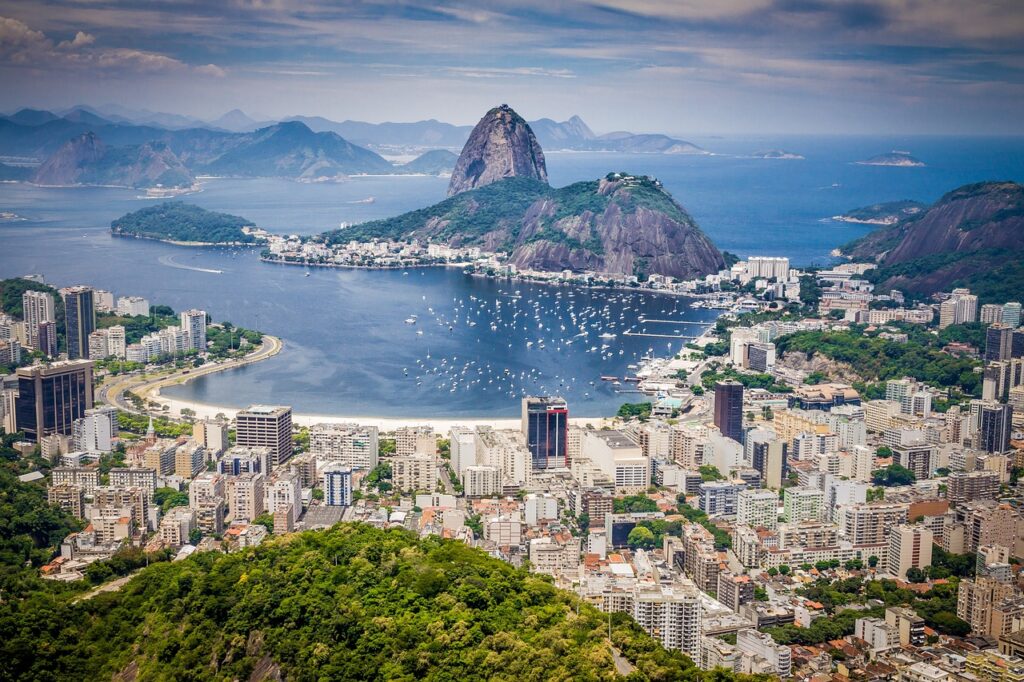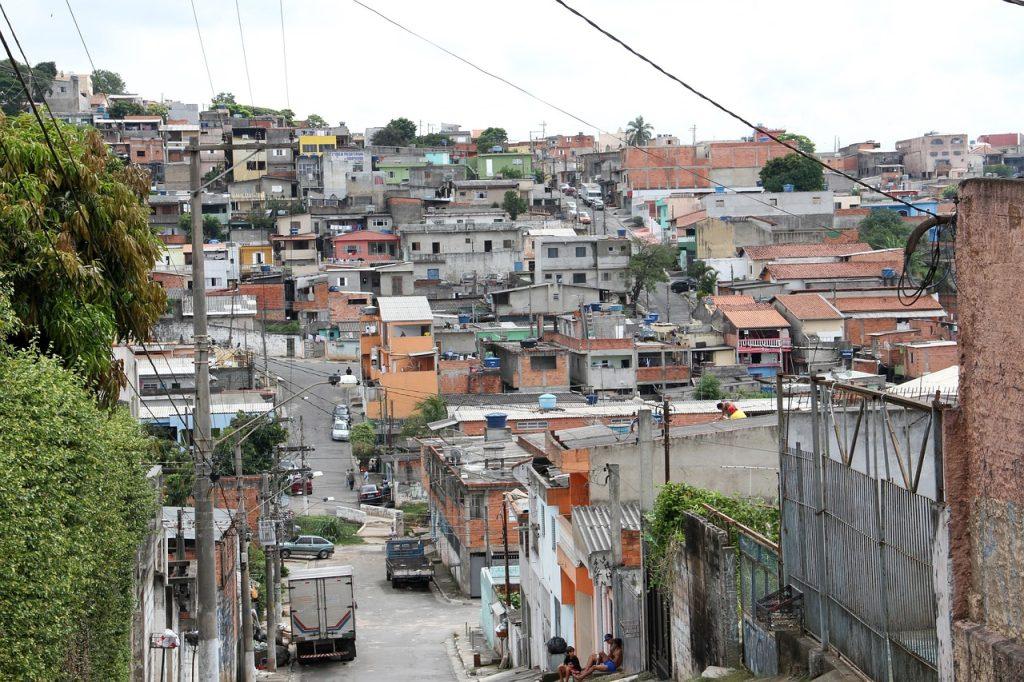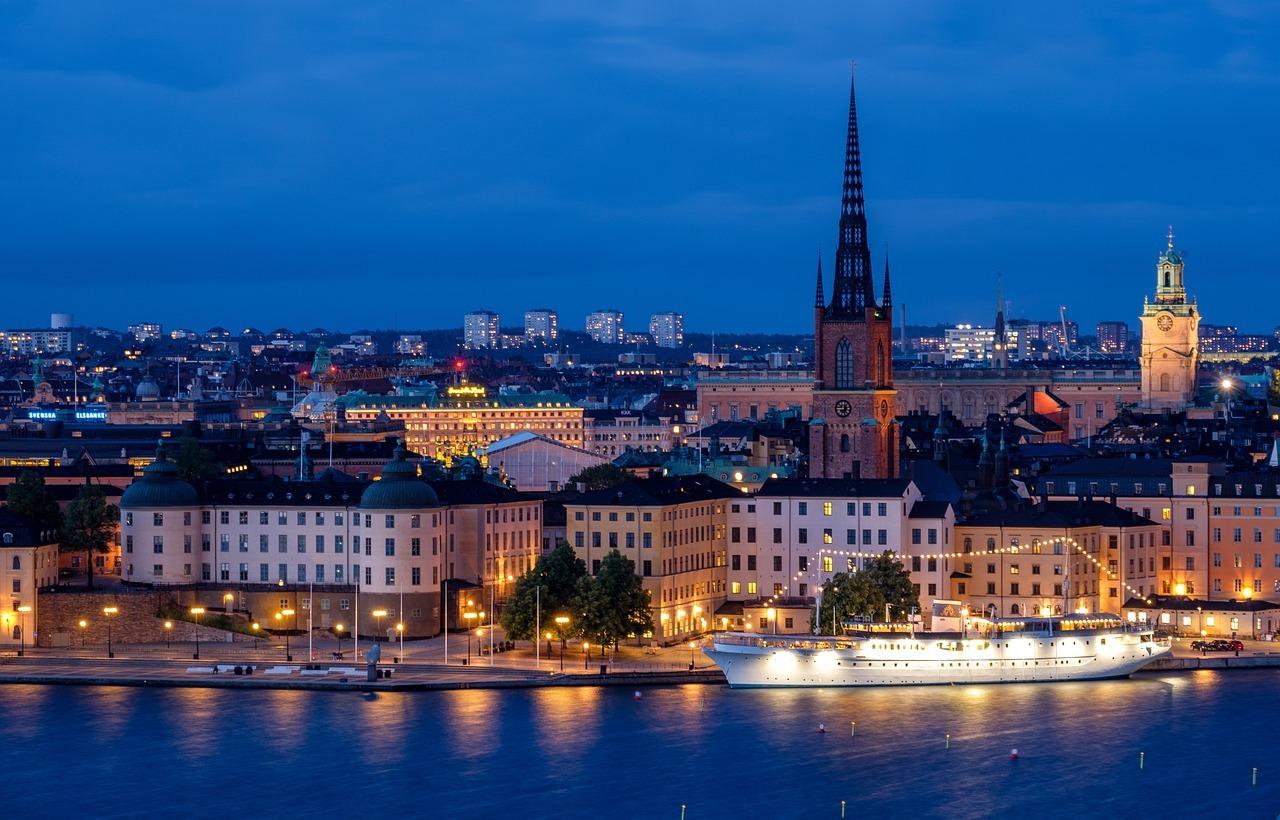Rio de Janeiro: A bustling metropolis nestled between verdant mountains and turquoise waters, offering endless sights, sounds, and flavors to discover.
Introduction
Rio de Janeiro is a captivating and lively city that offers a unique blend of natural beauty, cultural richness, and vibrant energy. Known as the “Cidade Maravilhosa” (Marvelous City), Rio is located on the southeastern coast of Brazil, surrounded by stunning beaches, lush forests, and majestic mountains. The city is famous for its carnival celebration, samba music, and football (soccer) culture, but it has much more to offer visitors than just its iconic landmarks.
From exploring the historic downtown district with its colonial architecture and museums, to experiencing the vibrant nightlife in neighborhoods like Lapa and Copacabana, Rio de Janeiro offers a diverse range of experiences for travelers. Whether you want to relax on a pristine beach, hike to the top of a mountain for panoramic views, or indulge in delicious Brazilian cuisine, Rio de Janeiro is a destination that promises to enchant and inspire you.

Short history
Rio de Janeiro has a rich and fascinating history that dates back to the 16th century, when Portuguese explorers first arrived in the region. The city was originally founded as a Portuguese colony and served as the capital of Brazil until 1960. During this time, Rio grew into a major center of trade and culture, attracting people from all over the world and developing a unique identity that blended elements of Portuguese, African, and indigenous cultures.
Over the centuries, Rio de Janeiro has experienced many significant events that have shaped its history, including wars, revolutions, and economic booms and busts. Today, the city is a dynamic and thriving metropolis that continues to evolve and adapt to the changing times. Despite its many challenges, Rio de Janeiro remains a beloved destination for travelers from around the world who come to experience its rich history, vibrant culture, and stunning natural beauty.
The people of the city
The people of Brazil and Rio de Janeiro are known for their warmth and friendliness. Brazilians are often described as being outgoing, social, and welcoming to strangers. In Rio de Janeiro specifically, people are known for their love of music, dance, and celebration, with the city being famous for its Carnival festivities.
Brazil is a very diverse country, with a mix of indigenous, African, European, and Asian influences. This diversity is reflected in the people of Rio de Janeiro, who come from a variety of ethnic and cultural backgrounds. Despite these differences, there is a strong sense of national identity among Brazilians, and a deep pride in their country’s rich history and culture.
However, like any place, there are also issues of inequality and crime that affect certain areas of Rio de Janeiro. It’s important to take necessary precautions and be aware of your surroundings, especially when traveling to unfamiliar areas. Overall, though, the people of Brazil and Rio de Janeiro are known for their hospitality and vibrant culture.
How to get here
Rio de Janeiro is a major international destination and is serviced by two airports: Galeão International Airport (GIG) and Santos Dumont Airport (SDU). Both airports have connections to major cities around the world, including direct flights from the United States, Europe, and other parts of South America.
If you are traveling from the United States or Europe, there are several airlines that offer direct flights to Rio de Janeiro, including American Airlines, United Airlines, Delta Air Lines, Air France, and British Airways. Alternatively, you can also find connecting flights through other major cities in South America, such as São Paulo or Buenos Aires.
Once you arrive at Galeão or Santos Dumont airport, you can take a taxi, bus, or private transfer to your destination in Rio de Janeiro. It’s important to note that taxi rates in Rio can vary widely, so it’s a good idea to confirm the fare with the driver before starting your trip. Additionally, if you’re traveling during peak hours, it’s a good idea to allow for extra time in case of traffic.
Where to stay
Rio de Janeiro offers a wide variety of accommodation options to suit every budget and preference. Some of the most popular places to stay in the city include:
- Copacabana – This iconic neighborhood is home to one of the world’s most famous beaches and offers a range of hotels, apartments, and hostels to suit all budgets.
- Ipanema – Known for its upscale shops and restaurants, Ipanema is a chic and trendy neighborhood that attracts a sophisticated crowd. There are plenty of luxurious hotels and apartments here, as well as some more affordable options.
- Santa Teresa – This bohemian neighborhood is a favorite among artists and creatives, and offers a more laid-back and authentic Rio experience. There are a number of charming guesthouses and boutique hotels in Santa Teresa, many of which are housed in historic colonial buildings.
- Lapa – If you’re looking for a lively and vibrant atmosphere, Lapa is the place to be. This neighborhood is famous for its nightlife scene and has plenty of hostels and budget hotels to choose from.
- Flamengo – A quieter and more residential neighborhood, Flamengo is a good option if you want to be close to the city center but away from the crowds. There are several mid-range and upscale hotels in this area.
- Barra da Tijuca – This neighborhood is located to the west of the city and offers a more modern and suburban vibe. It’s a popular destination for families and offers plenty of beachfront resorts and upscale hotels.
- Leblon – Adjacent to Ipanema, Leblon is another upscale neighborhood that’s known for its high-end shops and restaurants. There are several luxury hotels in this area that offer stunning ocean views.
- Botafogo – Located at the foot of Sugarloaf Mountain, Botafogo is a popular neighborhood for young professionals and offers a range of trendy hotels and hostels.
No matter where you choose to stay in Rio de Janeiro, you’ll find plenty of options to suit your needs and preferences. From luxury resorts to budget-friendly hostels, Rio has something for everyone. Just be sure to book in advance, especially during peak travel seasons and major events like Carnival.
Accomodations, hotels and more
The city has many excellent hotels to choose from, catering to a range of budgets and preferences. Here are some of the top hotels in Rio de Janeiro:
- Belmond Copacabana Palace: This legendary hotel is an iconic symbol of Rio de Janeiro, located right on the famous Copacabana Beach. It offers luxurious accommodations, excellent dining options, and world-class amenities.
- Hotel Fasano Rio de Janeiro: This stylish boutique hotel is located in the upscale neighborhood of Ipanema and features stunning views of the ocean and surrounding mountains. It has a rooftop pool, a spa, and a renowned Italian restaurant.
- Sofitel Rio de Janeiro Ipanema: This 5-star hotel is situated right on Ipanema Beach and offers panoramic views of the ocean. It has spacious rooms with modern amenities, a rooftop pool, and a French-inspired restaurant.
- Grand Hyatt Rio de Janeiro: Located in the exclusive Barra da Tijuca neighborhood, this luxurious hotel features elegant rooms with ocean or lagoon views, a spa, multiple swimming pools, and excellent dining options.
- JW Marriott Rio de Janeiro: This 5-star hotel is located on Copacabana Beach and offers stylish accommodations, an outdoor pool, a fitness center, and a rooftop bar with stunning views of the city.
For hostels, some popular options include:
- Lemon Spirit Hostel: This highly-rated hostel is located in the heart of Lapa, a neighborhood known for its vibrant nightlife. It offers affordable dorms and private rooms, a rooftop terrace, and free breakfast.
- El Misti Hostel Rio: With locations in both Copacabana and Ipanema, El Misti Hostel Rio is a great choice for budget travelers. It offers clean and comfortable dorms and private rooms, a shared kitchen, and a lively bar.
- Mango Tree Hostel Rio: This colorful and friendly hostel is located in the neighborhood of Santa Teresa, a bohemian enclave with great views of the city. It offers a range of dorms and private rooms, a pool, and a communal kitchen.
For gay-friendly hotels, some options include:
- Hotel La Costa: This small boutique hotel is located in the heart of Ipanema and is popular with gay travelers. It offers stylish and modern rooms, a rooftop terrace, and a friendly and welcoming atmosphere.
- Casa Cool Beans: Located in the artsy neighborhood of Santa Teresa, this gay-friendly guesthouse offers colorful and comfortable rooms, a pool, and a lush garden.
- Hotel Carioca: This budget-friendly hotel is located in the lively Lapa neighborhood and is popular with gay travelers. It offers simple but clean and comfortable rooms, a 24-hour front desk, and a great location for exploring the city’s nightlife.
Discover some of the areas
Copacabana

Copacabana is one of the most famous neighborhoods in Rio de Janeiro and is known around the world for its iconic beach. The neighborhood is located in the southern part of the city and is home to a wide variety of hotels, restaurants, shops, and attractions.
The main attraction in Copacabana, of course, is the beach, which stretches for more than 2 miles along the coast. This wide expanse of golden sand is perfect for sunbathing, swimming, and playing beach sports like volleyball and soccer. The beach is also lined with kiosks and restaurants that offer a variety of food and drink options, from traditional Brazilian snacks to international cuisine.
In addition to the beach, Copacabana is also home to several other attractions, including the iconic Copacabana Palace hotel, which has hosted numerous celebrities and dignitaries over the years. There are also several museums and cultural centers in the area, as well as a vibrant nightlife scene that offers something for everyone.
Overall, Copacabana is a vibrant and exciting neighborhood that offers a quintessential Rio de Janeiro experience.
Ipanema
Ipanema is a chic and trendy neighborhood located in the southern part of Rio de Janeiro. The neighborhood is known for its upscale shops, restaurants, and bars, as well as its stunning beach, which is considered one of the best in the world.
The beach at Ipanema stretches for about a mile and offers soft sand, crystal-clear water, and stunning views of the surrounding mountains. The beach is popular with locals and tourists alike, and is a great place to relax, sunbathe, and enjoy the lively atmosphere. There are also several beachfront restaurants and bars that offer a range of food and drink options.
In addition to the beach, Ipanema is also home to a number of other attractions, including the H. Stern Museum, which showcases the history and artistry of Brazilian jewelry, and the Hippie Fair, which takes place every Sunday and features handmade crafts and souvenirs from local artisans.
Overall, Ipanema is a vibrant and cosmopolitan neighborhood that offers a taste of the good life in Rio de Janeiro.
Santa Teresa
Santa Teresa is a charming and bohemian neighborhood located in the hills of Rio de Janeiro. Known for its narrow streets, colonial architecture, and laid-back vibe, Santa Teresa is a favorite among artists, writers, and other creative types.
The neighborhood is home to a variety of attractions, including the Parque das Ruínas, a cultural center housed in the ruins of a historic mansion. The center hosts exhibitions, concerts, and other events throughout the year. There is also the Escadaria Selarón, a colorful staircase adorned with tiles from all over the world, which has become a popular spot for tourists and locals alike.
One of the highlights of Santa Teresa is its vibrant restaurant and bar scene. The neighborhood is home to a number of cozy cafes, trendy bars, and upscale restaurants that offer a range of local and international cuisine. Many of these establishments are housed in historic buildings and offer stunning views of the city.
Overall, Santa Teresa is a unique and charming neighborhood that offers a glimpse into Rio de Janeiro’s rich cultural history. Whether you’re looking to explore the local art scene, sample some of the city’s best cuisine, or simply relax in a laid-back atmosphere, Santa Teresa is a must-visit destination in Rio.
Leblon
Leblon is a chic and upscale neighborhood located in the southern part of Rio de Janeiro. The neighborhood is known for its luxurious shops, high-end restaurants, and stunning beach, making it a popular destination for both locals and tourists.
The main attraction in Leblon is its beautiful beach, which is less crowded than neighboring Ipanema and offers a more secluded atmosphere. The beach is ideal for sunbathing, swimming, and surfing, and is surrounded by a number of beachfront restaurants and bars.
In addition to the beach, Leblon is also home to a variety of upscale shops and boutiques, offering everything from high-end fashion to unique artisanal crafts. The neighborhood is also known for its vibrant nightlife scene, with a range of bars, clubs, and music venues that cater to all tastes and styles.
Overall, Leblon is a luxurious and cosmopolitan neighborhood that offers a taste of the good life in Rio de Janeiro. Whether you’re looking to relax on the beach, indulge in some upscale shopping, or dance the night away, Leblon has something for everyone.

Favelas, should you visit?
Favelas are informal settlements that are typically characterized by poverty and high crime rates. While some favelas in Rio de Janeiro have become tourist destinations in recent years, it’s important to exercise caution when visiting these areas.
If you’re interested in visiting a favela, it’s important to choose a reputable tour operator that has experience and knowledge of the area. They can help you navigate the favela safely and provide insights into the local culture and history.
Favelas are home to many residents who may be sensitive to outsiders taking photos or treating their community as a tourist attraction. It’s important to be respectful and ask for permission before taking photos or engaging in any activity that may be seen as disrespectful or intrusive.
When visiting a favela, it’s best to leave valuables like jewelry, cameras, and phones behind to avoid attracting unwanted attention or becoming a target of theft.
Dressing appropriately can help you blend in with the local community and avoid drawing unwanted attention. It’s also important to wear comfortable and sturdy shoes, as many favelas have steep hills and uneven terrain.
Famous sites to visit
Rio de Janeiro is a city rich in history, culture, and natural beauty, and there are many famous sites and attractions that visitors should not miss. Here are some of the top places to visit:
- Christ the Redeemer: This iconic statue of Jesus Christ is located atop Corcovado Mountain and is one of the most recognizable symbols of Brazil.
- Sugarloaf Mountain: This distinctive peak rises up out of Guanabara Bay and offers stunning panoramic views of Rio de Janeiro.
- Copacabana Beach: This world-famous beach is a favorite among tourists and locals alike, and is known for its soft sand, crystal-clear water, and lively atmosphere.
- Ipanema Beach: Another beautiful beach in Rio, Ipanema is known for its upscale shops, restaurants, and bars, and is a great place to relax and soak up the sun.
- The Selaron Steps: This colorful staircase in the bohemian neighborhood of Santa Teresa is covered in tiles from all over the world and is a must-see attraction for anyone visiting Rio.
- The Rio Carnival: Held every year in the weeks leading up to Lent, the Rio Carnival is a world-famous celebration of music, dance, and culture that attracts visitors from around the globe.
- The Tijuca National Park: This vast urban forest is located in the heart of Rio de Janeiro and is home to a variety of wildlife, as well as a number of hiking trails and waterfalls.
Unique things to do
If you’re looking for some unique and offbeat things to do in Rio de Janeiro, here are a few suggestions:
- Visit the Lapa Arches: The Lapa Arches are a series of colonial aqueducts that date back to the 18th century. They are now used as a bridge for the tram that runs through the neighborhood, but you can also explore the arches on foot.
- Check out the Museum of Tomorrow: This futuristic museum explores the intersection of science, technology, and sustainability, and features interactive exhibits and immersive installations.
- Visit the Escadaria do Convento de Santa Teresa: This beautiful and ornate staircase is located in the Santa Teresa neighborhood and is covered in colorful tiles and mosaics.
- Explore the Feira de São Cristóvão: This market in the northern part of the city specializes in all things northeastern Brazil, including food, music, and crafts.
- Attend a Samba School Rehearsal: In the lead-up to the Rio Carnival, many of the city’s samba schools hold open rehearsals where you can watch the dancers and musicians practice their routines.
- Take a Street Art Tour: Rio de Janeiro has a vibrant street art scene, and there are a number of tours that will take you around the city to see the latest murals and installations.
Try the local food
The local food in Brazil has been influenced by a variety of factors, including the colonial history, the availability of ingredients in the country, and the diverse cultures that have settled in the area over time. Portuguese explorers brought many of the staple ingredients of Brazilian cuisine, such as rice, beans, and cassava, while African slaves contributed their own cooking techniques and spices. The indigenous peoples of Brazil also played a role in shaping the local cuisine, with ingredients like açaí and tapioca coming from their traditional foodways. All of these influences have come together to create a rich and varied culinary tradition in Rio de Janeiro.
Some of the most popular dishes include:
- Feijoada: This hearty stew made with black beans, pork, and sausage is considered the national dish of Brazil and is often served with rice and orange slices.
- Churrasco: Brazilian-style barbecue, which typically includes cuts of beef, pork, chicken, and sausage, is a staple of the local cuisine.
- Coxinha: This popular street food consists of deep-fried dough filled with shredded chicken and spices.
- Brigadeiros: These bite-sized chocolate truffles are a favorite dessert in Rio and can be found at bakeries and cafes throughout the city.
- Açaí: This superfood berry is native to the Amazon rainforest and is often served as a smoothie or bowl topped with granola and fruit.
Some iconic restaurants and bars
- Garota de Ipanema: This restaurant is named after the famous Bossa Nova song and is located in the heart of Ipanema. It serves traditional Brazilian dishes and is known for its caipirinhas, a popular Brazilian cocktail made with cachaça, sugar, and lime.
- Bar do Mineiro: This cozy bar is located in the bohemian neighborhood of Santa Teresa and is known for its delicious feijoada, a hearty Brazilian stew made with black beans and various types of meat. It’s a popular spot for both locals and tourists.
- Churrascaria Palace: This upscale restaurant in Copacabana is known for its churrasco, a Brazilian-style barbecue where skewers of meat are grilled over an open flame. It offers a wide range of cuts of meat, along with a salad bar and other side dishes.
- Rio Scenarium: This iconic bar is located in Lapa and is known for its lively atmosphere and live music. It’s a great spot to enjoy a cold beer or a caipirinha and dance the night away.
- Bar Urca: This historic bar is located in the charming neighborhood of Urca and is known for its stunning views of Guanabara Bay. It’s a great spot to enjoy a cold beer and some traditional Brazilian snacks while watching the sunset.
If you want to discover some trendy and upcoming places to eat and drink
Here are some of the most popular new and trendy restaurants to check out:
- Lasai: This modern and innovative restaurant in Botafogo serves a creative tasting menu based on seasonal ingredients. It’s one of the most highly regarded restaurants in Rio, with a focus on sustainable and locally sourced produce.
- Braseiro da Gávea: This trendy steakhouse in the upscale neighborhood of Gávea is known for its high-quality meats and rustic atmosphere. It’s a great spot to enjoy a traditional Brazilian churrasco, along with a cold beer or a caipirinha.
- Bar da Frente: This hip bar in Botafogo is known for its creative cocktails and delicious bar food. It has a relaxed and welcoming atmosphere, with outdoor seating and live music on some nights.
- Momo Gelato: This artisanal gelato shop has several locations around the city, serving unique and creative flavors like passion fruit and ginger, coconut and tapioca, and hazelnut and Nutella.
- The Slow Bakery: This charming bakery in Copacabana serves a range of artisanal breads, pastries, and sandwiches made with locally sourced ingredients. It’s a great spot for breakfast or lunch, with a cozy and rustic atmosphere.
Rio’s classic drinks and new ones to taste
Caipirinha: This is the national drink of Brazil and is made with cachaça (a sugarcane-based spirit), lime, sugar, and ice. It’s a refreshing and delicious cocktail that’s perfect for a hot day in Rio.
Açaí smoothie: Açaí is a popular superfood that’s native to Brazil and is often consumed in the form of a smoothie. It’s made from the pulp of the açaí berry, blended with other fruits and sometimes topped with granola or honey.
Mate: This is a traditional Argentinean tea that’s also popular in Brazil. It’s made from the dried leaves of the yerba mate plant and is often consumed in a gourd with a metal straw. It has a bitter and slightly earthy flavor and is believed to have many health benefits.
Batida: This is a type of cocktail made with cachaça or another spirit, along with fruit juice and condensed milk. It’s sweet and creamy and comes in many different flavors, including coconut, passion fruit, and mango.
Chopp: This is the Brazilian version of draft beer, which is served in small glasses and is often enjoyed at bars and restaurants. It’s usually light and refreshing, and some popular brands include Brahma and Antarct.
How to get around in the city
Rio de Janeiro has several options for transportation, and the best one depends on your destination, budget, and preferences. Rio’s metro system is modern, safe, and reliable, with four lines that connect many of the main neighborhoods and tourist attractions. It’s a good option for traveling longer distances quickly and avoiding traffic.
Rio has an extensive bus network that covers almost the entire city, with different routes and fares depending on the distance and type of bus. It’s a cheaper option than taxis or Uber, but it can be crowded and confusing for first-time visitors.
Taxis and Uber are widely available in Rio and can be a convenient option for short trips or when you don’t want to use public transportation. Taxis have a fixed fare and can be hailed on the street or called from a taxi stand, while Uber allows you to request a ride through the app and pay by credit card.
Rio has several bike rental services and bike lanes that allow you to explore the city on two wheels. It’s a fun and eco-friendly way to see the sights and get some exercise, but be aware of the traffic and safety risks.
Finally, walking is a great way to experience Rio’s vibrant streets, beaches, and neighborhoods up close. Many of the main tourist areas, such as Copacabana, Ipanema, and Lapa, are pedestrian-friendly and offer plenty of attractions and food options.




